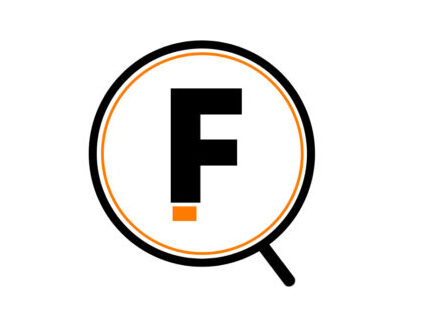Are you aware that freelance graphic design is one of the fastest-growing industries? – statistics say it has experienced 46 percent of increase since the beginning of 2019.
Graphic design, one of the fields that is always changing and diverse, includes a lot of creative work, from the creation of cool logos and branding materials to the development of stunning illustrations and animated images. Growing attraction of freelance graphic design has become noticeable in the past years and the allure is strong enough to attract a diverse range of creative professionals who are desiring autonomy, flexibility, and opportunity to showcase their talent on the terms that they set for themselves.
In this article, I will take you through different aspects of freelance graphic design. Whether you are a fresh freelance graphic designer aspiring to launch a successful career or a veteran professional wanting to retain your dominance as business environment trends keeps changing, this guide will show you every bit you need for this different and dynamic creative industry.

Who Is A Freelance Graphic Designer?
A freelance graphic designer is simply a professional who works independently, offering graphic design services to clients on a project basis.
Understanding Freelance Graphic Design
The freelance graphic design gives birth to creativity in small business where individuals offer their design services to various clients on a short-term basis instead of being an employee working for one company or agency permanently. Whether it’s brand identity or promotional designs, Freelance graphic designers increases the chances of expanding your business’s market through their creativity and expertise. Therefore, their artistic skills, experience and the use of high-end computer programs make the business stand out.
Working as an independent freelance graphic designer confers plenty of the benefits to those searching for independence and flexibility, or creativity. An essential feature of freelancing is the flexibility because freelancers have a chance to decide on the projects they want to engage in, the time at which they will complete them, and the place from which they will work. This versatility opens the window of opportunity, which makes it possible to combine work and private life, and also to embrace personal interests either at home or between work. On the other hand because freelancers have increased creative autonomy, they enjoy the freedom to create and explore the range of their artistic ideas, approaches and styles. It is common for freelancers to have greater earning potential, because they can set their rates based on their skills, experience, as well as market demand in comparison to being trapped into conventional salary.
Beside its widest range of benefits, freelance graphic design may have its own difficulties on the other side. One fundamental challenge is that a freelancer might have unstable incomes, which causes the inequality in workload and clients demand, this creates uncertainty about their finances. Apart from that, upskilling themselves becomes a necessity for freelancers working in such saturated markets which are often bombarded with numerous freelancers, and thus they have to promote their products and highlight the main difference to get ahead. In practice, freelancing requires one to handle dozens of tasks at the same time, ranging from clear account project management to self-promotion. Rising to those challenges needs to be shown through being resilient, determined and having a considered approach to the building of a long-lasting freelance business.
Some Examples Of Freelance Graphic Design Services Are:
1. Logo Design:
Logo design implies the act of designing a pictorial or emblem-like icon that works as a brand or company’s symbol. An attractive logo is like a person’s name; it is simple, effective and captures the true nature of the product or service offered to the consumers. Often first, the logo designers do their research around the brand’s values, hoping for the audience’s target, and the industrial landscape, ultimately making several concepts and being improved upon with the customers’ remarks.
2. Branding And Identity Design:
Branding and identity design involves creating a unified visual identity for a brand across various communication channels. Among these brand guidelines includes instructions on the logo usage, colors, fonts and any other visual information that can go into design. Brand developers always ensure that all brand communications have similar look and feel, this is essential for brand recognition and building brand equity.
3. Print Design:
Graphic design comprises of a big variety of print design formats such as business cards, flyers, brochures, posters, and packaging intended for physical printing on paper. Print designers determine dimensions, arrangement, typeface, color and paper stock in order to make their designs both visually appealing and functionally effective as far as conveying the message to the recipients is concerned.
Others Include:
4. Web Design:
Web design, in general, denotes developing a website’s overall visual effects and structure. Web designers work on something called user experience (UX) and user interface (UI) design, which means that they are concerned about the ease of site navigating and beautiful looking websites and these should be in line with the brand’s identity. They collaborate with web developers extensively to bring their plans into tangible artifacts through HTML, CSS, and other web technologies.
5. Social Media Graphics:
Social media graphics refers to graphics that are produced for the specific usage on social media platforms like Facebook, Instagram, Twitter, Linked In and Pinterest. These graphics can range from cover photos to profile pictures, post photos, graphs, and marketing graphics. Social media designers develop using content specifically structured to receive likes, shares, and follows so the brand can connect with the audience and boost interactions.
There are many other services in the niche and I have chosen few of them randomly. It depends on what they are most skilled at and their focus areas; these areas can be logos, print projects, web pages, or broader campaigns.
Essential Skills For Freelance Graphic Designers
1. Technical Skills:
Technical skills serve as foundational abilities that are paramount for improving one’s ability to perform the needed graphic design tasks correctly. A familiarity with the latest versions of among others Adobe Photoshop, Illustrator and InDesign is compulsory. Knowing the design essentials like what composition, typography, color principles in layout etc are is also crucial for creative work that is visually attractive and looks professional. Furthermore, graphic designers need to possess the appropriate skills in image editing for the alteration and improvement of images and they need to have knowledge of print design for the design of business cards, brochures, posters, and packaging too.
2. Creative Skills:
Creative skills involve a process of creating an interesting design that is capable of delivering a certain picture or message, and at the same time being able to establish a mental link with the target group of people. Broad strategic thinking skills compose the base of the graphic designer, allowing them to transform abstract ideas into the visual square. Being skilled in illustration not only makes it possible to develop your own specific graphics, but it can also give unique experience to any design project.
3. Soft Skills:
Soft skills in the world of business are all interpersonal skills, such as effective communication and cooperation, which contribute to the ability of people to work together. Communication abilities become useful in knowing client requirements, in outlining design principles as well as receiving comments. Time management is a factor, which plays an important role in achieving result through prioritizing tasks, handling deadlines and processing different projects together. Both customer relations and collaboration skills are the fundamentals of establishing and maintaining individual as well as group customers’ relations, while at the same time helping designers in their work with clients, coworkers and other stakeholders.
Others include:
4. Adaptability:
Adaptability, in simple words, is the capacity of an individual to deal with the unexpected and make adjustments to the situational requirements that may occur in a project, as per the client’s need, and as per the developing industry trends. A versatile and practical freelance graphic designer should be able to adapt their working style to each client and a different creative vision, thus producing unique and important graphic design solutions. Lifelong learning is no less important than providing consumers with relevant and actual knowledge of the progressing design. Being in the always-changing field of graphic design, you have to learn new design styles, software enhancements and industry development that are happening all the time to remain successful and compete effectively.
5. Business Skills:
Business skills are probably the main requirement for a freelance graphic designer to be able to operate his business successfully. The development of the portfolio includes the compilation of work that features all his/ her skills, creativity, and versatility with the aim of getting the attention of potential clients. Promotions, marketing, and self-advocacy skills are critical for proper selling of services, gathering customers, and crafting a personal brand that stands out among rival firms. Pricing and negotiation skills are established to determine a fair personal rate, negotiating a contract and maintain both the designer’s and the client’s interests. Apart from the financial management skills, there are always expences and taxes to deal with, together with budgeting and invoicing. As a freelancer, accounting abilities are extremely crucial.
Building a Successful Freelance Graphic Design Business
1. Creating a Portfolio:
The portfolio will help spotlight your skills as well as the specific projects that you have carried out. It should contain a lot of projects that include different areas in design which shows your talent, sense of creativity, and ability to find design solutions. Make sure that your portfolio projects is presented in a simple and appealing way by including detailed explanations and context. Maintain the portfolio as a living document, and constantly update it with new projects showcasing your ongoing development and ensure it is aligned with potential employers interest.
2. Marketing and Networking:
In marketing, you are responsible for promoting the services you offer and reaching out to potential clients across multiple channels of outreach. Do not forget to utilize a variety of sources such as social networks, freelance networks, and networking sites where you can showcase your work and connect with potential clients as well as opportunities. Attend industry events, meetings, conferences, and network opportunities to meet the clients, colleagues and others who are related to the field you are in. Engage your current clients and build long-term commitments through word-of-mouth. This will allow you to increase your clientele and access new business opportunities.
3. Setting Rates and Managing Finances:
Others Include:
Come up with the appropriate pricing structure taking into account factors that may be related to your experience, type of project and market demand. Compare your rates with industry standards and question your competitors to make sure your pricing is effective and corresponds with the high standards of the sector. Certainly state your rates and pricing rules honestly to the clients, so that they know this from the beginning. Devise the working and the best of financial management practices that help to trace the income, expenses, invoices and the income taxes, ensuring long-term financial stability and profitability.
4. Client Relations and Communication:
It is of crucial significance in achieving success as a freelance graphic designer to build and maintain customer relationships. Listen attentively during consultation and use appropriate follow-up questions to ensure complete understanding, alignment with expectations, and client satisfaction. Communicate clearly, and effectively, during the lifetime of the project, reserving regular updates in progress reports to clients and taking both their comments and feedback into account. Establishing practical project timeframes, deliverables and revision limitations should be a key objective in order to ensure that the clients are an essential part of the project management process.
5. Continuous Learning and Professional Development:
Stay updated on emerging design trends, software developments, and current news in the sector by means of continuous learning and broadening of their professional scope. Invest in relevant training courses, workshops, and certifications to excel in your skill set and stand out as a serious contender. Gather critical information from colleagues, mentors, as well as customers regarding the areas of weakness and the chances for growth. Through networking with other professionals and community participation as well as collaboration with others, the learning process is maximized through the exchange of ideas. Trimming down their primary areas of expertise could help freelance graphic designers establish a solid basis for their business, and also bring in more potential clients. Furthermore, this can be a good start towards long-term success in this field.
Overcoming Challenges and Finding Success
1. Dealing with Rejection and Criticism:
Rejection and criticism come naturally in any professional field that involve design; therefore, freelancers can expect the same. It is not a big deal to have a resilient mindset and grow mindset, when it comes to carrying positive feedback. Instead of looking at criticism as your personal deterrent, consider it to be a sphere of learning and growth. Understand the feedback that is given to you and use it to gradually develop your capability and improve your output. Always look on the bright side and remind yourself of the things you have already accomplished to be able to deal with the hard times.
2. Balancing Work and Life:
Freelance graphic designers usually struggle to Maine a separation between work and personal life so that they can be able to enjoy relaxation and peace of mind. The predominant role of setting up a very distinct boundary between work and your personal life can help to reduce prolonging burnout episodes and maintain a good sense of overall well-being. Schedule regular free time to relax and restore energy, preventing yourself from overworking. First, make sure to include self-care tasks as part of your activities such as exercise, hobbies, and talking to your friends and family which are the things that may help you to develop your physical and mental health. Coming up with some good time management tricks may considerably increase your performance at work during office hours, thus helping you to overcome the work-life collisions more easily.
3. Navigating Inconsistent Income:
Smoothing the rate of income is a recurrent problem that self-employed graphic designers have to face. To cope with this difficulty, designing a budget that considers the difficult times as well as a good financial plan will help you to achieve it. Diversify your income through having different projects, passive income, or by expanding service offerings. Accumulate a financial buffering by storing a percentage of your high-yield savings for use during the slow periods. Negotiate payment terms with clients to ensure steady cash flow and avoid financial stress.
Others Include:
4. Standing Out in a Competitive Market:
When the market is saturated, it is crucial that you find what sets you apart, what clients may be looking for or what opportunities may be available to you above your competition. Identify your individual talents, skills, and creative character, and make good use of them to distinguish you from others. Identify a specific market or business in which you can offer customized and personalized services and solutions to customers as well. Take time to stay current with industry trends and continuously enhance your skills. Also look for ways to develop your professional life so as to stay competitive and be relevant in the market.
5. Managing Time and Priorities:
Multitasking is a valuable skill of a freelance graphic designer that allows them to manage tasks and get them done effectively. Develop a tasklist including urgent, important and deadline-based ones to meet client’s expectations and projects’ deadlines. Use project management tools and techniques so that your projects can be organized, progress status can be tracked and you can make sure your projects are delivered within time. Make use of time management tips and techniques such as setting goals, batch work, and filtering out distractions, to make the best of your time and become more productive and efficient.



